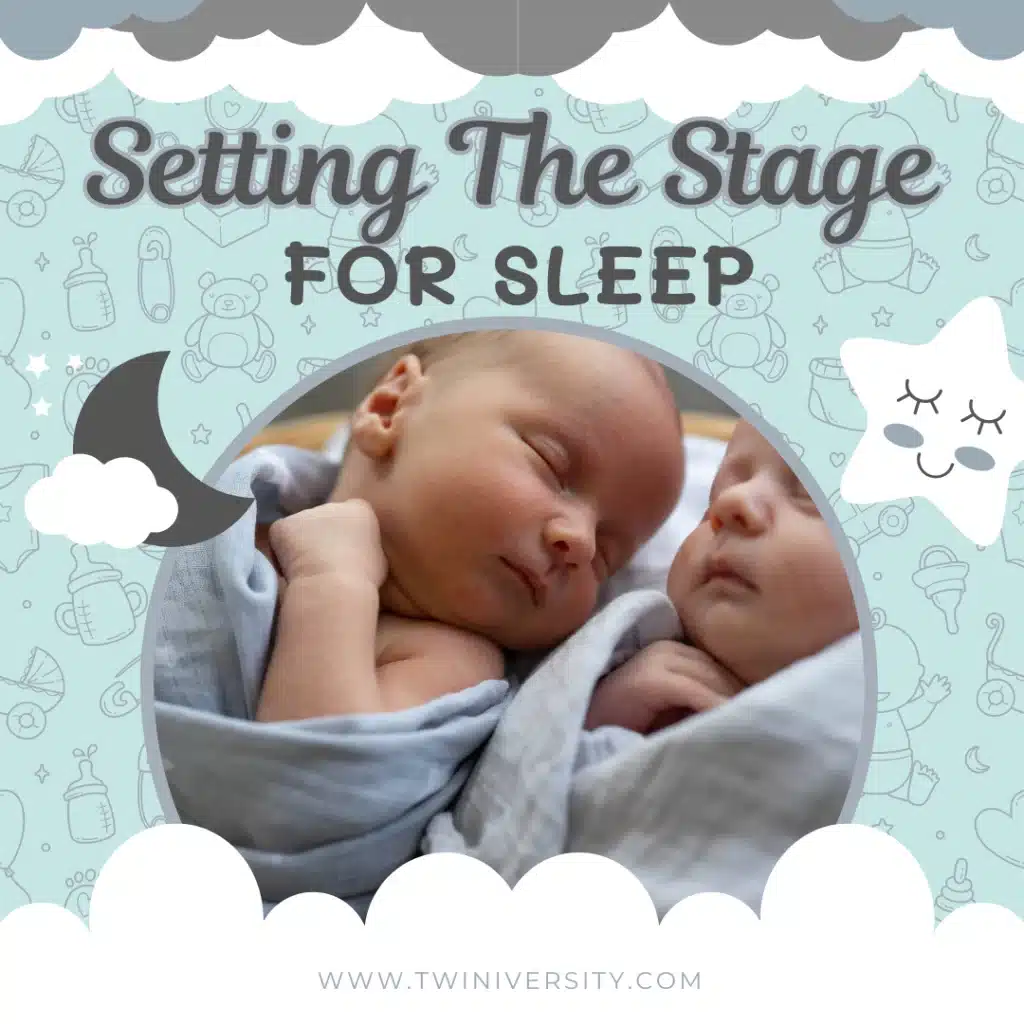Last updated on March 6th, 2024 at 10:19 am
When it comes to the topic of your newborn twins and sleep I’m sure someone has teased you by saying, “Oh, you have twins? You’ll never sleep again!” Don’t let others’ comments scare you. You will sleep again! But, this does bring up a good question: “How do you help newborns sleep?” It’s really important to set the stage for sleep at home by re-creating a womb-like atmosphere in the room using sound, lighting, swaddling, and motion.
Here Are Some Tips to Help You Prepare Your Twins for Sleep:
1. Use Swaddles
Swaddles mimic the womb and help babies feel secure, sleep better, always on their backs, and ease the startle reflex. Swaddles can be used at birth until your babies start to roll. At that time you’ll need to switch to a transitional sleep bag.
2. Bring in the Sound Effects
Your womb and the hospital ward were noisy and your babies are used to those sounds. Do your best to recreate them. Try a sound machine (heartbeat, lullabies, white noise), streamed music or CDs.
3. Overnight Feedings Are Business Only!
Keep the lights dim and don’t make eye contact or talk too much to prevent overstimulation. Change, feed, burp, swaddle, then back to bed.
4. Safety First!
Avoid soft toys, pillows, bumpers or blankets in the crib or bassinet. Swaddle babies and place them on their backs with a pacifier. Baby monitors with thermostats help quietly monitor the room and the temperature (aim between 64⁰F-74⁰F) and you can use a fan for air circulation. Always check crying babies in-person for wetness, spit up, body temperature, etc.

5. Daytime Naps = Better Nighttime Sleep!
Infants need 3-5 naps daily after feedings and activity. If the babies wake each other during naps, consider separating them until they are more consistent with naps. Use room-darkening shades, black out curtains, dimmer switches, nightlights, or lamps with warm bulbs and shades to provide soft lighting.
6. Watch for Signs of Tiredness
Yawning, tired eyes, whining, or eye-rubbing are signals to put to bed. Babies usually fall asleep within 10-15 minutes. Don’t push babies to stay awake; they’ll become cranky and harder to settle when overtired.
Now you know how to set the stage for sleep. And if the babies are sleeping well, so are you!
So dim the lights, brush off your storybooks, and enjoy the nursery rhymes and lullabies while transporting your babies into the world of sleep. Sweet dreams!

Lorraine Conforti is a proud new mom of twin boys and pet-parent of two cats and a dog. Being both conservative and artistic, she describes herself as “a little bit country and a little bit rock and roll.” She enjoys the arts, music, writing, and had performed in a Blues/Rock band with her Husband for several years. She is also passionate about health and fitness and has held certifications for nutrition and Personal Training, and has earned a BS Degree in Healthcare Management.
[gravityform id=”278″ title=”true” description=”true”]
This Contest is Closed









